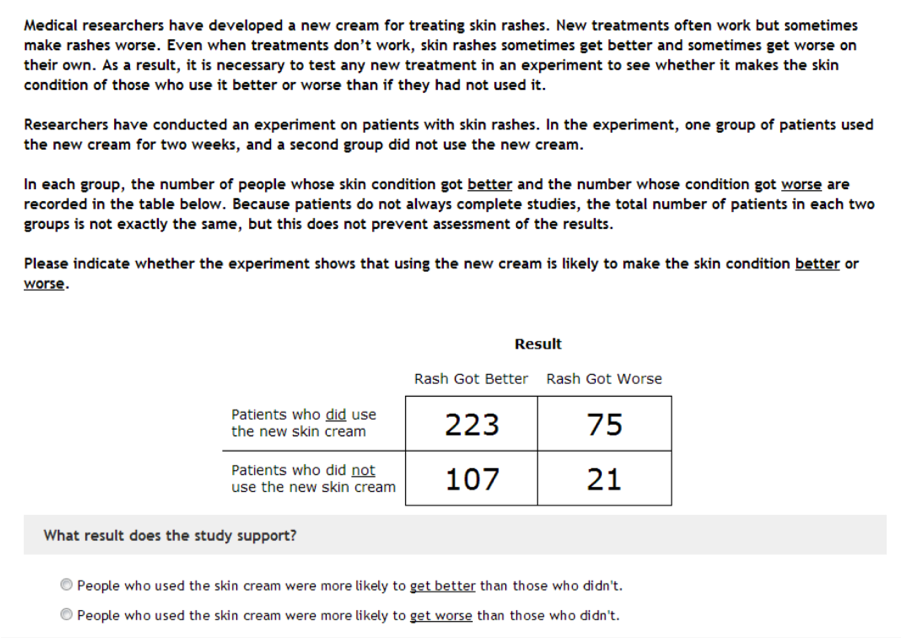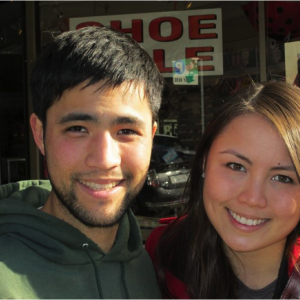
Ernie Ting is the founder and Chief Executive Officer of CivImpact Labs, a startup venture committed to helping news and civic organizations inform the public and positively impact our democracy. His career has ranged over many different organizations in diverse fields. In the private sector, Ernie was a senior business planning manager and then an economics consultant and expert witness on telecommunications markets and regulation. In the public sector, he served as a lead expert or senior advisor to top officials in the federal and California state governments and as an agency administrator in local government. In the nonprofit arena, Ernie has been a Chief Financial Officer and senior director, served on boards of directors and been a volunteer with the GSB Alumni Consulting Team. He is a longtime Oakland resident and the loving dad of an adult son Bryan and daughter Sarah, as well as the adoring partner of his sweetheart Dianne.
Ernie has also embraced Project Redwood and carved time from his busy schedule to serve on our Grant Review and Evaluation and Impact Committees. He writes below about his current work.
In some ways, you could say that I have had a traditional MBA career in reverse. While I was certainly not alone among the alums of the Stanford Business class of 1980 in devoting the earlier years of my career to social purpose organizations, it was clearly not the norm at the time. I also devoted a big chunk of my mid-career years to raising my son and daughter, probably not so typical among the men in my class.
And now I’ve launched my first true startup venture at – well, a mature age. So I don’t really fit the model of being retired and giving back in my spare time, because now I don’t have extra time to fill. (And I don’t have extra energy either, as I have to keep up with the twentysomethings who comprise most of my startup team!) However, devoting myself to creating social impact has been a central part of my career for over four decades, and it continues to be.
That new startup, CivImpact Labs, aims to advance an important civic cause at the same time as it pioneers a new business market.
As a business, we’re mixing behavioral and data science with a software platform to provide digital media publishers with better intelligence to understand how well they are engaging their desired audiences. This offering may not seem unique, as marketing “analytics” firms abound that use big data on consumer transactions or interactions with content to help publishers quickly and precisely target and influence the people they want to reach.
But here’s the catch. Unlike most of those firms, we’re not looking to identify the people who are low-hanging fruit – the market segments who are easiest to sell your widgets to or motivate to sign up for your new service.
As a business with a social mission, we’re targeting the audiences that are the hardest to influence. While this might seem like business madness – and perhaps it is – there are many situations relevant to creating social impact where this is exactly the most important problem to solve and value to create.
All too conveniently, the barely-completed 2016 presidential campaign dramatically demonstrates how critical this problem can be to the welfare of our nation and the world. For as it turns out, the ever-deepening political polarization that culminated in the November election has been driven to a substantial degree by modern media’s inability to connect with diverse audiences and inform them in a meaningful way.
An Information Enigma
A brief example from academic literature illustrates just one aspect of this challenge. In a 2013 study, Yale professor Dan Kahan and some colleagues conducted a study of 1000 Americans in which participants were shown data that they were told was from a trial of a new skin cream to treat rashes. They were then asked to examine the results data and answer a question about whether the skin cream was effective. The actual text is below.

Figure 2 from Motivated Numeracy and Enlightened Self-Government (Dan Kahan, Ellen Peters, Erica Cantrell Dawson, Paul Slovic)
The one subtlety in the question was that the sample size for the patients who got the cream and those that didn’t was not the same. This little challenge meant that people who made a quick choice without pausing to consider or who did not recognize this algebraic wrinkle tended to get the answer wrong. As expected, the more educated that participants were, the better they did on this question.
Kahan and company then replaced the labels in the table with text that now described the results of a supposed experiment that showed whether a ban on carrying concealed handguns in public resulted in an increase or decrease in crime. The numbers in the table were arranged in exactly the same way, but this time the participants drew dramatically different conclusions from the data. Whether participants got the answer right depended heavily on whether the data supported their existing political point of view – and the more educated the respondent, the less likely they were to get the answer right if it did not conform to those beliefs.
A Critical Problem for Democracy
At CivImpact Labs, we measure and observe this and other pervasive behaviors in how people respond to the media’s coverage of all kinds of important subjects. Overwhelmingly, people do not respond to stories on contentious issues such as immigration, jobs and the economy, or criminal justice based on new information contained within the content. Instead, they see what they want to see and believe what they want to believe.
In this respect, most popular news and social media today drive strong, but predominantly uninformed beliefs about our most pressing social, economic and political issues. And while it may be popular in some circles to assume that this behavior is primarily the province of a right-wing fringe, evidence suggests that it holds on both ends of the political spectrum.
Since the recent election, observers have been inclined to lay much of the blame for our current civic woes on social media giants Facebook and Twitter for spreading “fake” news, and on other digital media for promoting partisan content that supports echo chambers. However, our research suggests that the impact of fabricated information and hysterics posing as news – while a serious concern — may be overstated.
At CivImpact Labs we routinely run experiments on media content and observe that it doesn’t necessarily matter whether you are consuming the Wall Street Journal, Fox News, the New York Times or “fake news” sources. Even the most impartial journalism tends to reinforce and increase the gulf between everyday partisans, including colleagues, family and friends from coast to coast. That’s just the way most people respond to media stories on any subject on which they have an existing opinion.
Simply put, most Americans no longer learn much more than trivia from modern political media coverage. We tend to believe we know a lot already and don’t want to be challenged in our assumptions. Our pre-existing beliefs drive our perception of what is going on in the world and why. And the more educated we are, the more we are prone to this form of confirmation bias – and are inclined to deny that we suffer from it.
Of course, this is a critical problem for the whole notion of an informed democracy. This phenomenon has spurred a steeply rising tide of political polarization and caused our society to become more fiercely and starkly divided than at any other time in recent history. Most tragically as we’ve all observed, the resulting conflict of red and blue points of view has been paralyzing our public institutions and wrenching apart different segments of our society – and sadly, hobbling efforts to alleviate hardship and suffering both in the US and around the world.
The Role of CivImpact Labs and System-Level Change
Our startup is pushing back on this trend by helping news organizations to evaluate how well their coverage of important civic issues is actually informing their audiences. We’re also developing tools so those organizations can get better at enhancing the public’s knowledge and understanding of issues. And finally, we are working with journalists so they can better understand and communicate the diversity of views on those issues held by people in very different communities across the nation.
I can safely say that my preoccupation with political psychology and its implications for our society predates the hyperbolic 2016 presidential campaign by eons. As part of a lifelong interest in how we can improve management in the public and social sectors, I’ve been carefully examining the curious relationship of information, the media and how people form their views on public issues for many years. Indeed, an economics research paper on voter decision-making that I wrote precisely forty years ago provides archeological evidence within my dusty personal archives of just how long I’ve been pursuing this inquiry.
I value the lessons from this knowledge because I strongly believe that the largest scale of social impact that we can create is in system-level changes that influence the entire environment within which all business, government or nonprofit organizations operate. Among those systems, a functioning US democracy is certainly among the most critical to the success of all of those sectors. In a current Stanford Social Innovation Review article on impact investing, Omidyar Network’s Matt Bannick and colleagues describe a similar focus on creating “market-level” impact that they state can equal or exceed the impact of the direct services that social ventures provide.
If you have had an occasion to talk with me at any of our class reunions, you may also have heard me warn for many years about the threat to our society posed by the seesaw pattern of alternate parties winning by a bare electoral majority after highly-polarized elections. Recent developments in media and technology have just deepened and accelerated this crisis.
Even before this last election cycle, the environment of constant vitriol and hate had expanded well beyond the realm of politics into all manner of our social and economic interactions. As noted by Stanford political scientists Shanto Iyengar and Sean Westwood, political polarization now drives a greater level of overt prejudice and implicit bias on the part of both liberals and conservatives than any other social cue, including race, gender or economic class.
In this respect, the last presidential election has only put a fine point on the stakes for my startup in succeeding at what we are attempting to do. There are a lot of indicators that the November 2016 election will not settle much in terms of the venom that many Americans on both sides of the political divide have for the “enemy” on the other side. Indeed, new metrics we have developed suggest that this polarization could continue to intensify.
To avoid this future, we are working hard to develop tools that will enable news media organizations to be truly successful at informing their audiences on challenging political topics – not just reinforcing the pre-existing biases they hold. If we are successful, publishers will not only be better at overcoming those biases and imparting new information. They may also enhance their audience’s understanding of the different perspectives held by others on a topic, and perhaps their interest in bridging political divides when doing that can create a mutually beneficial result for all of us.
It’s a big challenge, but one that I hope you’ll be interested in following.

